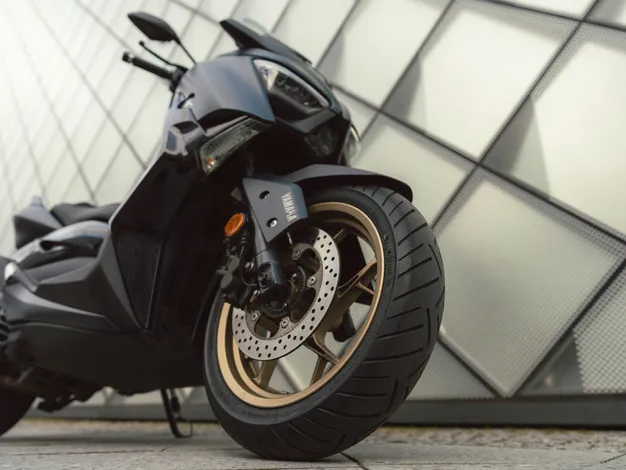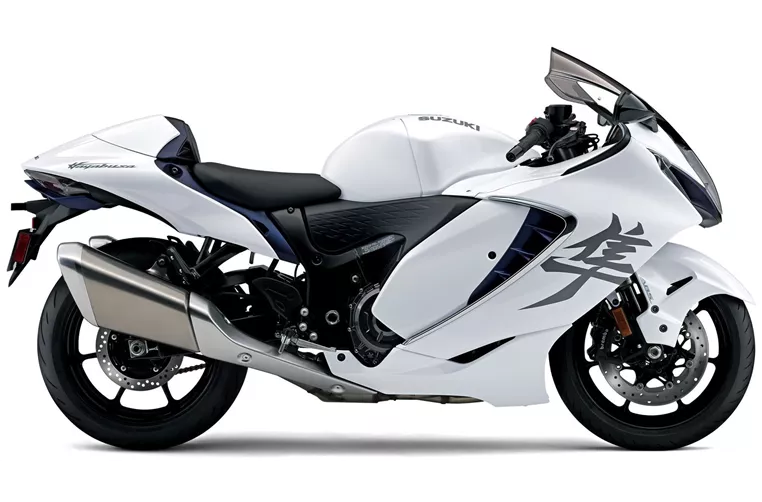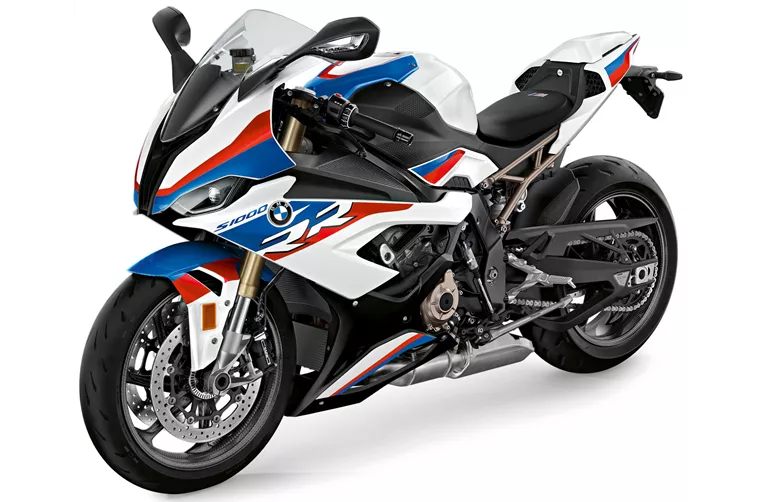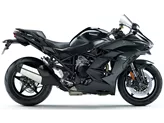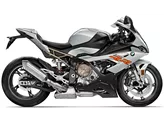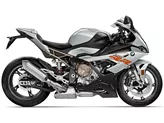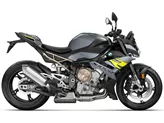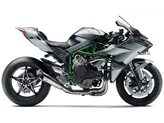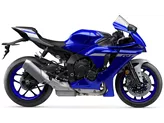Suzuki GSX 1300 R Hayabusa 2022 vs. BMW S 1000 RR 2019
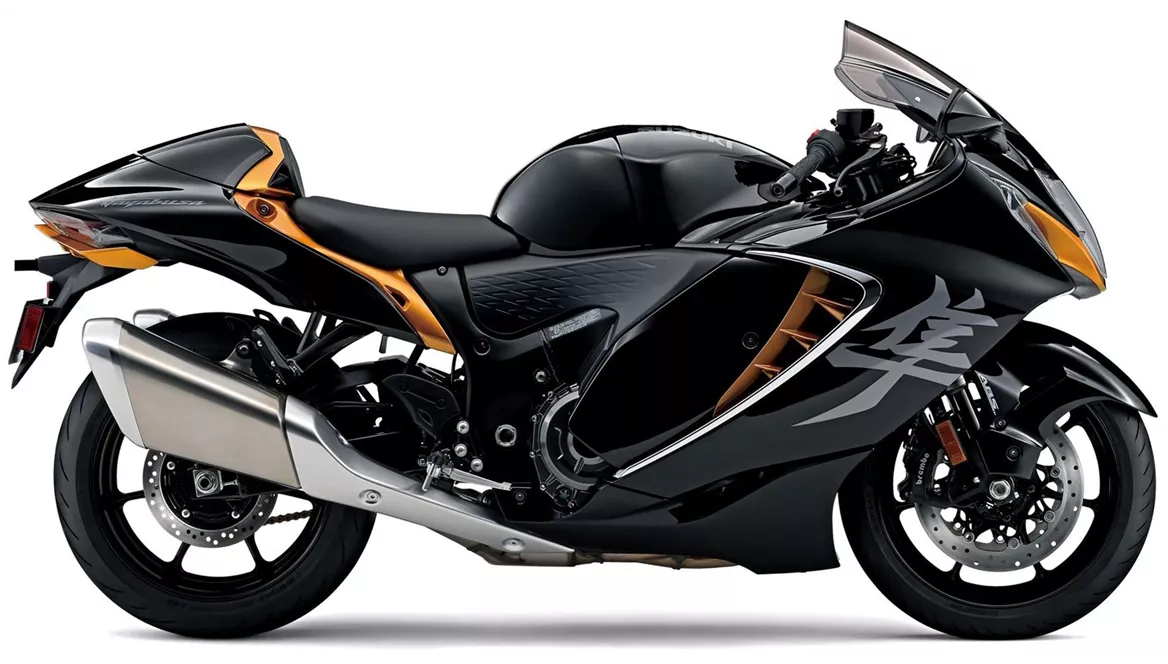
Suzuki GSX 1300 R Hayabusa 2022
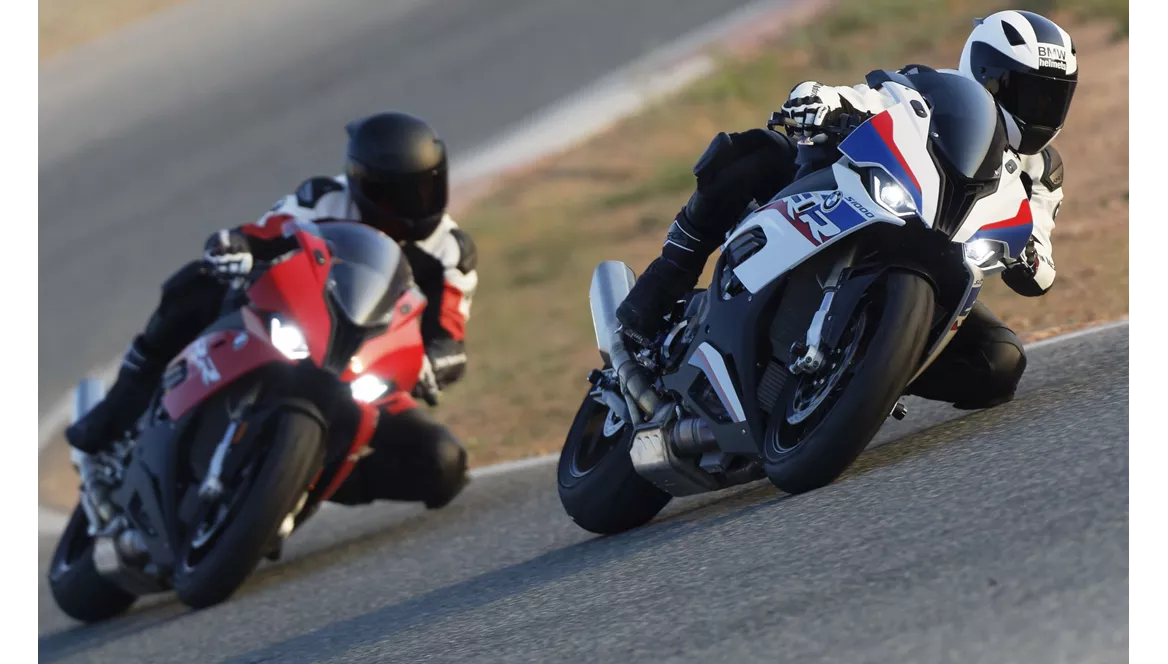
BMW S 1000 RR 2019
Pregled - Suzuki GSX 1300 R Hayabusa 2022 vs BMW S 1000 RR 2019
The Suzuki GSX 1300 R Hayabusa 2022 and the BMW S 1000 RR 2019 are both high-performance supersport motorcycles with impressive technical specifications. However, they have some key differences that set them apart.
Starting with the engines, the Suzuki GSX 1300 R Hayabusa 2022 features an in-line four-cylinder engine with a displacement of 1340cc. It delivers 190 horsepower and 150 Nm of torque. On the other hand, the BMW S 1000 RR 2019 also has an in-line four-cylinder engine but with a slightly smaller displacement of 999cc. It produces a higher power output of 207 horsepower but a lower torque of 113 Nm. Both engines have DOHC valve systems and offer impressive performance, but the BMW has a higher power output.
In terms of suspension, both motorcycles feature upside-down telescopic forks at the front and swing arm suspension at the rear. The suspension on both bikes is adjustable for compression, preload, and rebound. The rear suspension on both models is made of aluminum. However, the BMW S 1000 RR 2019 has a twin-tube, load-bearing engine frame, while the Suzuki GSX 1300 R Hayabusa 2022 has an aluminum twin-spar frame. The BMW's frame design offers better stability and performance.
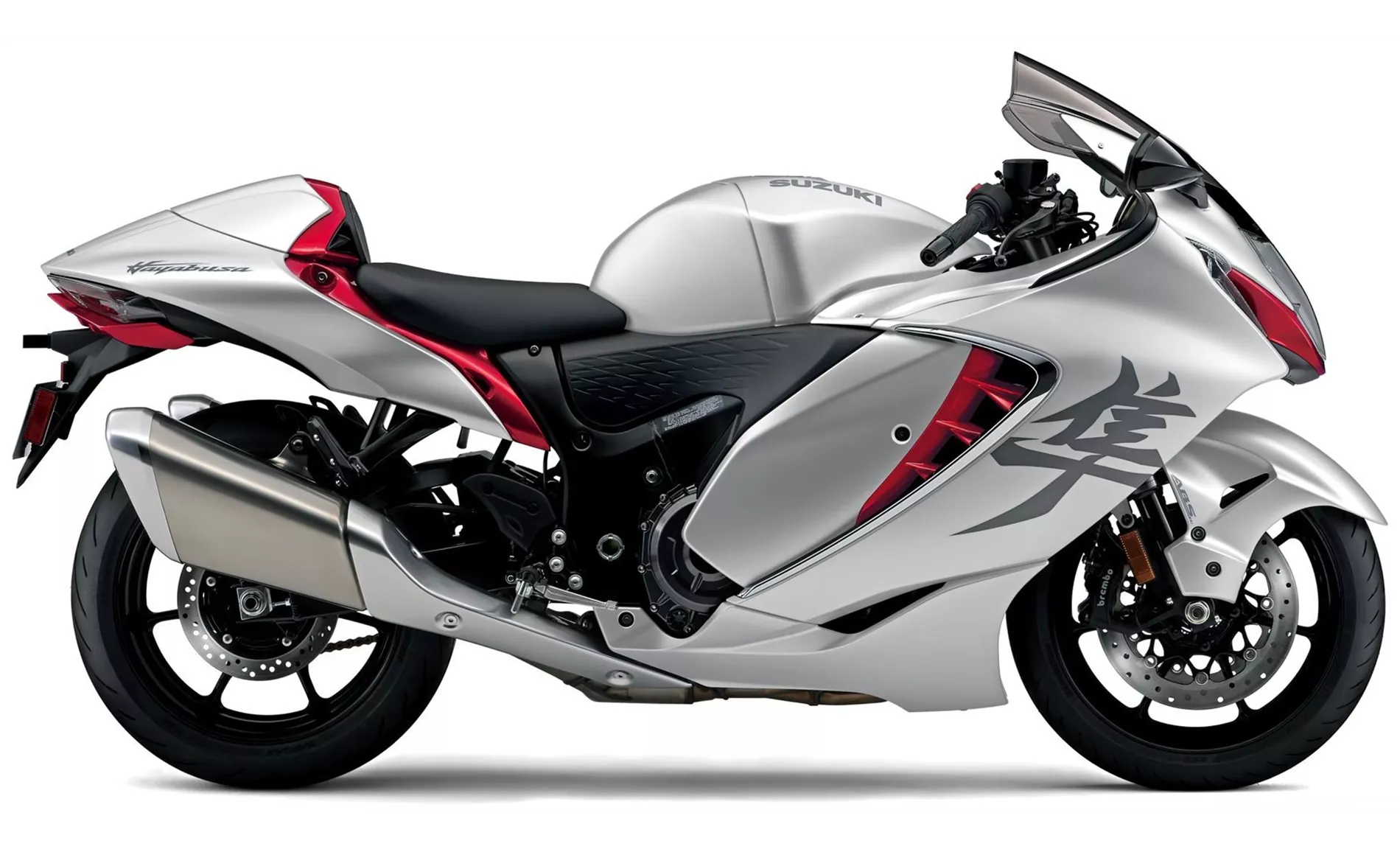
Suzuki GSX 1300 R Hayabusa 2022
When it comes to braking, both motorcycles have double disk brakes at the front with a diameter of 320mm. The Suzuki GSX 1300 R Hayabusa 2022 has a combined brake system, while the BMW S 1000 RR 2019 features a quickshifter. Both bikes have advanced rider assistance systems such as ABS, traction control, and riding modes.
In terms of dimensions and weights, the Suzuki GSX 1300 R Hayabusa 2022 has a wheelbase of 1480mm and a seat height of 800mm. It weighs 264kg with ABS and has a fuel tank capacity of 20 liters. The BMW S 1000 RR 2019, on the other hand, has a slightly shorter wheelbase of 1441mm and a higher seat height of 824mm. It weighs significantly less at 197kg with ABS and has a smaller fuel tank capacity of 16.5 liters.
Both motorcycles come equipped with LED headlights and offer a range of advanced features. The Suzuki GSX 1300 R Hayabusa 2022 has cruise control as standard, while the BMW S 1000 RR 2019 has a high-quality display and frame.

BMW S 1000 RR 2019
In terms of strengths, the Suzuki GSX 1300 R Hayabusa 2022 is praised for its powerful engine, comfortable seating position, cornering ABS, stable brakes, and mature chassis. The BMW S 1000 RR 2019 is commended for its linear power delivery, precise DDC suspension, excellent shift assistant, sportier seating position, and high-quality details.
However, the Suzuki GSX 1300 R Hayabusa 2022 is criticized for its high weight and subjective styling. The BMW S 1000 RR 2019, on the other hand, is said to have lost some excitement due to its linear power delivery and has a menu navigation system that takes time to get used to.
In conclusion, both the Suzuki GSX 1300 R Hayabusa 2022 and the BMW S 1000 RR 2019 are impressive supersport motorcycles with their own strengths and weaknesses. The Suzuki offers a powerful engine and comfortable riding position, while the BMW provides a more controllable power delivery and sportier seating position. Ultimately, the choice between the two will depend on personal preferences and priorities.
Tehničke specifikacije Suzuki GSX 1300 R Hayabusa 2022 u odnosu na BMW S 1000 RR 2019
Prednosti i nedostaci u odnosu na
Prednosti i nedostaci u odnosu na
Suzuki GSX 1300 R Hayabusa 2022
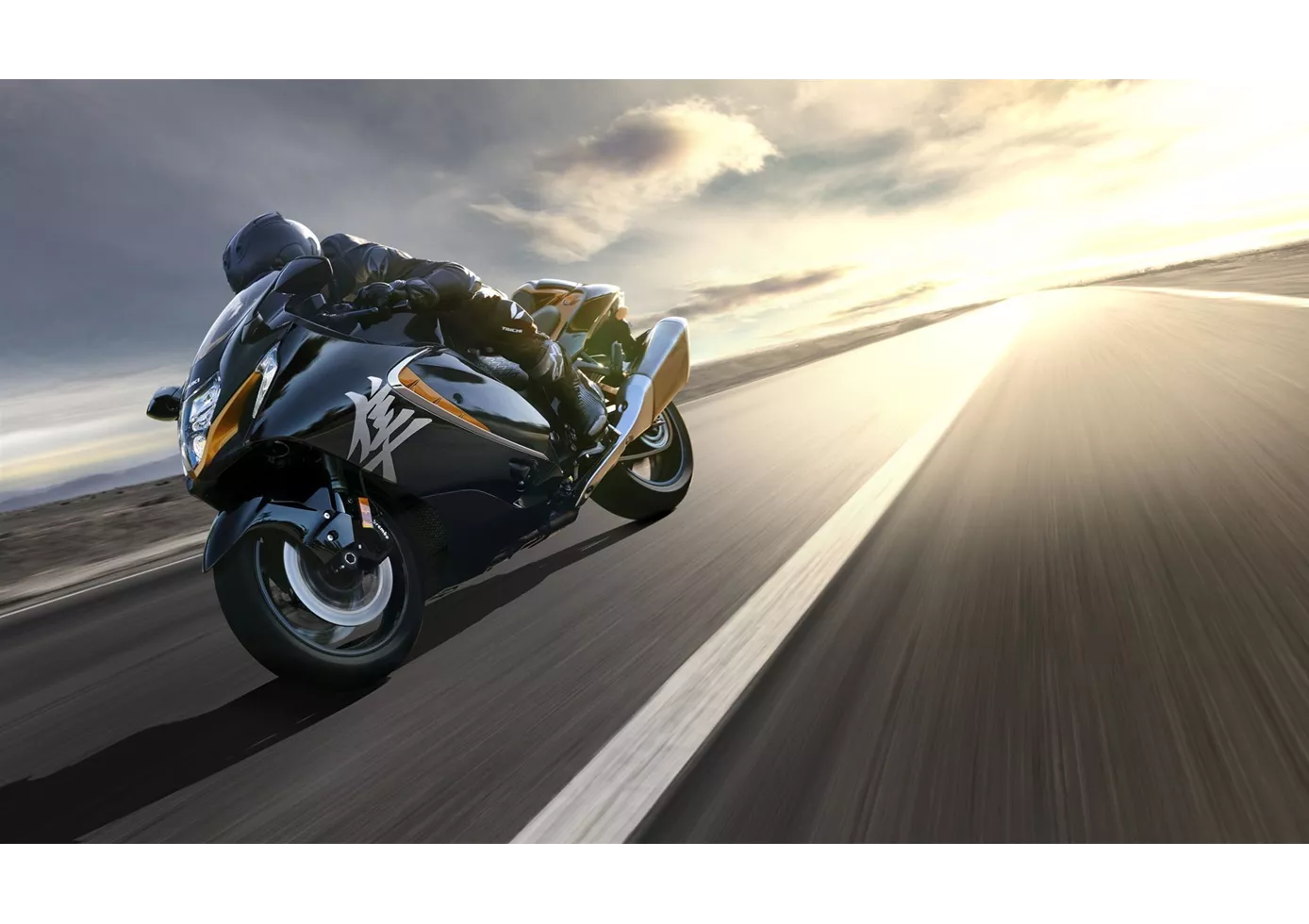
The Hayabusa is an absolute legend, the first production motorbike to run at over 300 km/h cannot be dismissed as a minor matter. With the new Busa, however, Suzuki has recognised the signs of the times. The current model, with its extensive electronic equipment including cruise control as standard, is an excellent hyper-tourer. The ergonomics are still sport-oriented, but the rider sits well integrated in the machine and thus also enjoys good wind protection. The brakes are stable, the handling is fine and the chassis is wonderfully stable and mature. The icing on the cake is, of course, the huge 1340 cubic in-line four-cylinder engine, which impresses with its 190 hp alone. Even better, however, is the maximum torque of 150 Newton metres, which is felt to be available from idle speed. In terms of sovereignty, this engine is hard to beat!
BMW S 1000 RR 2019
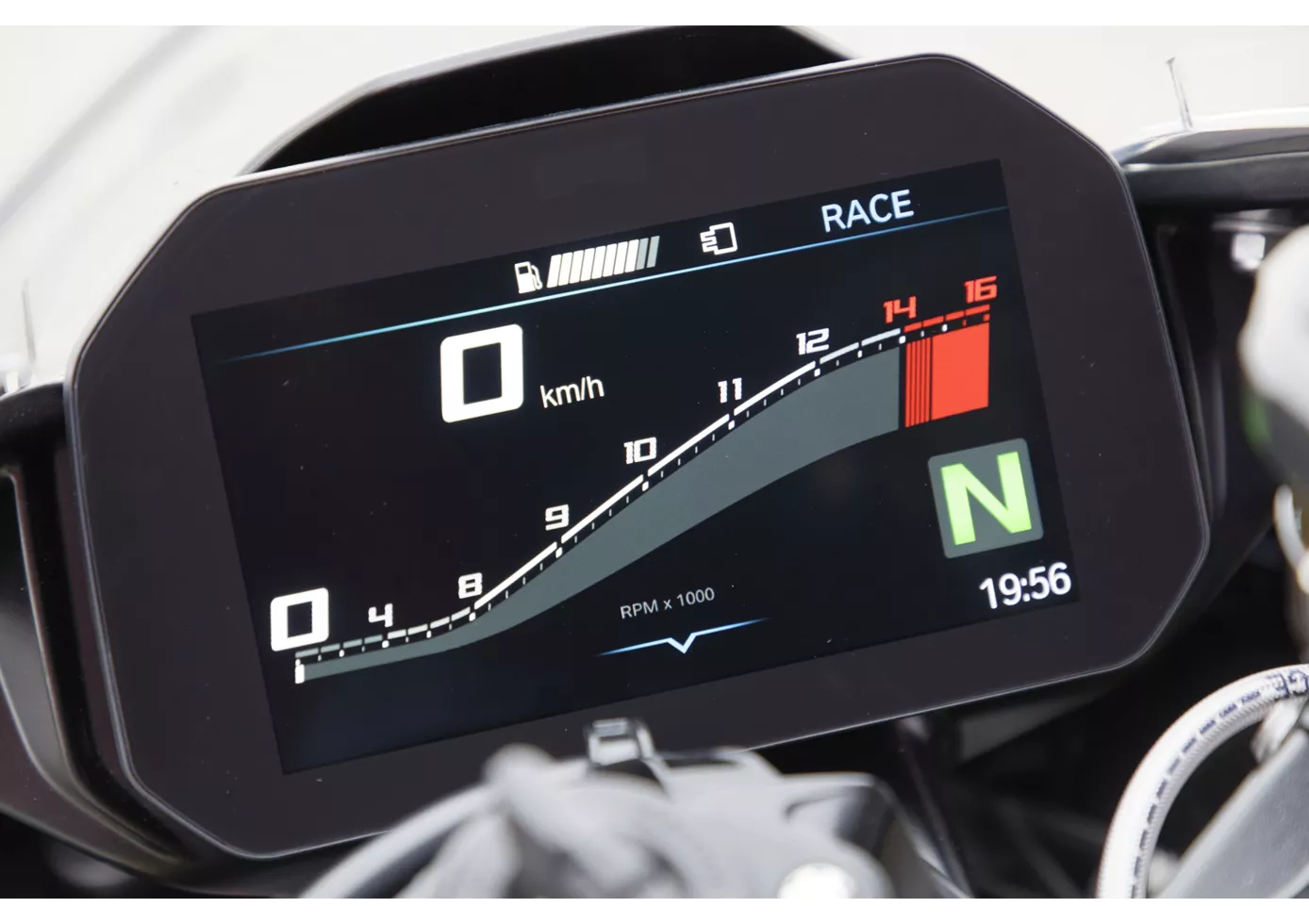
The new 2019 BMW S 1000 RR is a completely new supersports bike. It has become significantly more compact and, above all, lighter. The machine is incredibly easy to control and, compared to the previous model, almost feels like a 600! The seating position and the entire set-up of the machine have become much sportier, but can be brought to the tarmac in a much more user-friendly way thanks to the significantly improved electronics package, the saved weight and, last but not least, the almost linear power delivery of the power unit - bravo! Unfortunately, there is still one downer: if you want to benefit from the innovations to the maximum, you have to put a maximum number of crosses in the dealer's box. In return, however, you can create your own individual BMW!
Usporedba cijena Prosječna tržišna cijena Suzuki GSX 1300 R Hayabusa vs BMW S 1000 RR
There are a few key differences between a Suzuki GSX 1300 R Hayabusa 2022 and a BMW S 1000 RR 2019. In terms of price, the actual average price of a BMW S 1000 RR 2019 is about 3% higher. Compared to BMW S 1000 RR 2019 there are more Suzuki GSX 1300 R Hayabusa 2022 bikes available on the 1000PS.de Marketplace, specifically 12 compared to 11. It takes less time to sell a BMW S 1000 RR with 63 days compared to 136 days for the Suzuki GSX 1300 R Hayabusa. Since model year 2005 1000PS.de editors have written 24 reviews for the Suzuki GSX 1300 R Hayabusa and 135 reviews for the BMW S 1000 RR since model year 2010. The first review for the Suzuki GSX 1300 R Hayabusa was published on 7/10/2007 and now has more than 10,000 views. This compares to more than 4,000 views for the first review on BMW S 1000 RR published on 4/16/2008.
